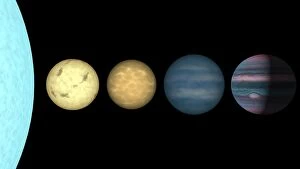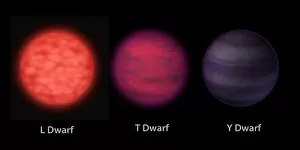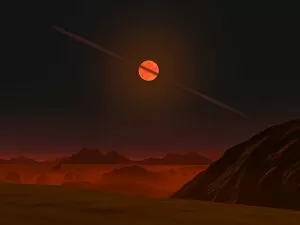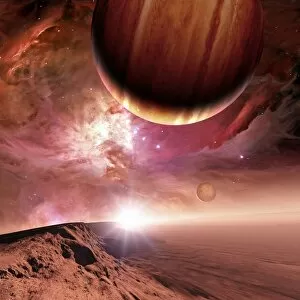Brown Dwarfs Collection
Brown dwarfs, often referred to as "failed stars, " are fascinating celestial objects that blur the line between stars and planets
All Professionally Made to Order for Quick Shipping
Brown dwarfs, often referred to as "failed stars, " are fascinating celestial objects that blur the line between stars and planets. In an artist's concept of twin brown dwarfs known as 2M 0939, their ethereal glow illuminates the vastness of space. Similarly, in another depiction of Gliese 229 b, a solitary brown dwarf floats gracefully against a backdrop of twinkling stars. Comparisons between brown dwarfs and both stars and planets are beautifully illustrated by artists who capture their unique characteristics. One such rendition showcases these enigmatic objects amidst a cosmic dance, highlighting their intermediate nature. Another artwork portrays Teide 1 from the surface of a hypothetical Mars-like planet, offering us a glimpse into what it might be like to witness these celestial wonders firsthand. As we embark on interstellar journeys through artistic imagination, we envision how an interstellar traveler might perceive brown dwarfs – majestic orbs glowing softly against the infinite expanse. From the perspective of a large moon orbiting one such failed star, its radiant presence dominates the sky with awe-inspiring beauty. In our minds' eye, we explore alien worlds where barren landscapes stretch towards distant horizons while a brown dwarf looms overhead – an ever-present companion in this hypothetical realm. Surrounded by swirling disks of planet-building dust or set against primitive backgrounds on alien planets, these stellar anomalies captivate our imaginations with their mysterious allure. Binary systems like 2M J044144 further intrigue us as they showcase two brown dwarfs locked in eternal gravitational embrace. The intricate dance between these celestial bodies reminds us that even within failed star systems lies extraordinary complexity waiting to be unraveled. Through artistry and scientific curiosity alike, we delve into the captivating world – silent sentinels dotting our universe's tapestry with their subtle radiance and enigmatic presence.











